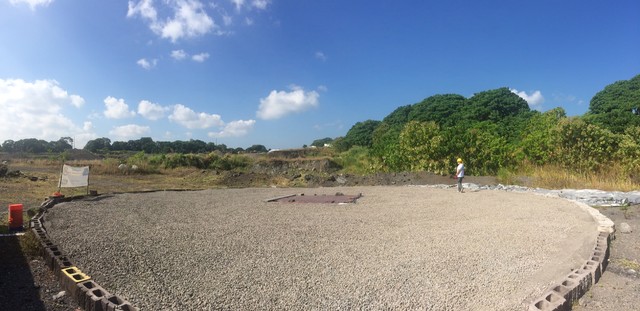Researchers at the Pacific International Space Center for Exploration Systems are conducting a rocket engine firing test later this month in hopes of testing the durability of a newly constructed basalt lunar landing pad. ADVERTISING Researchers at the Pacific International
Researchers at the Pacific International Space Center for Exploration Systems are conducting a rocket engine firing test later this month in hopes of testing the durability of a newly constructed basalt lunar landing pad.
The test, a four-second burn of an engine capable of launching a 960-pound rocket, will help determine whether the pad’s design and construction would hold up for future space exploration. The project aims to shed light on different methods of landing pad construction for future trips to Mars and the moon.
“The overall project was a proof of concept of whether it’s possible to build a landing pad from start to finish, remotely by rovers and robots doing the work operating from a distance, and using only local materials,” PISCES Project Manager Rodrigo Romo said. “Now, we have a landing pad but (we want to find out), ‘Can it withstand the plume of a rocket engine? … or (does) it send pavers flying all over the place?’ If it does that, we need to go back to the drawing board.”
PISCES, a Hilo-based aerospace agency that operates under the state Department of Business, Economic Development and Tourism, teamed up with NASA and Honeybee Robotics to build the pad, which was completed in January.
The 100 basalt pavers were set into place with robots and made out of material mined from a quarry near Hilo. Near identical material exists on Mars and the moon, Romo said.
Landing pads are key in future Mars and moon missions because they provide a stable place for spacecraft to come and go without ejecting debris and causing damage.
Romo said the test will determine whether the landing pad can withstand the temperature and velocity of a jet plume. Researchers also want to test its “interlocking mechanism,” or how well the pavers stay in place under high stress situations.
A licensed rocket operator is coming from Oahu to conduct the test. The operator also is supplying the engine housing, Romo said. PISCES is procuring the engine’s propellant from a company on the mainland.
The test will take place at 1 p.m. March 20 at a rock quarry in Keaau. It is not open to the public.
If the test goes well, researchers will go back to NASA and look at making the process “more flight ready,” Romo said.
“Once we prove the concept and know the materials and design work, then, we can start looking at a fully automated, non-man operation,” he said. “And then we also need to start looking at testing the materials in high vacuum and low temperatures. Even though we have great analog conditions here for the move … we can only do so much in open air.”
Email Kirsten Johnson at kjohnson@hawaiitribune-herald.com.



